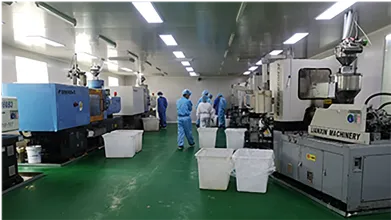https://www.wahmg.com/)">
Exploring the Role of Petri Dishes in Chemical Reactions and Experimental Techniques in Laboratories
Exploring the Role of Petri Dishes in Chemical Reactions and Experimental Techniques in Laboratories
The Role of Petri Dishes in Chemistry A Fundamental Tool for Exploration
In the realm of scientific exploration, particularly in chemistry and biology, the humble Petri dish stands as one of the most fundamental tools. Originally developed in the late 19th century by the German bacteriologist Julius Richard Petri, this shallow, flat dish has become a staple in laboratories around the world. Its simple design belies its immense utility and versatility in facilitating a variety of experiments.
At its core, a Petri dish typically consists of two circular, transparent halves—one serving as a lid and the other as the base. This design allows for easy observation and manipulation of samples while providing an enclosed environment that minimizes contamination. In chemistry, Petri dishes are often employed to culture microorganisms, conduct chemical reactions, or even crystallize compounds, making them invaluable across numerous research applications.
The Role of Petri Dishes in Chemistry A Fundamental Tool for Exploration
Moreover, Petri dishes facilitate the observation and documentation of chemical reactions. In many educational and research settings, they are utilized to perform small-scale experiments that allow chemists to visualize reactions without the complexity of larger apparatuses. For example, chemists may use Petri dishes to conduct diffusion experiments, where they can observe how substances move through a medium. This can lead to a better understanding of reaction rates, solubility, and other important chemical properties.
petri dish function chemistry

In addition to culturing microbes and conducting reactions, Petri dishes are also instrumental for crystallization. Chemists often use them to grow crystals of various compounds through evaporation or cooling methods. The transparent nature of the dish allows for precise observations of crystal formation, which can be critical in fields such as pharmaceuticals, where the purity and structure of a compound are vital for drug development.
The versatility of the Petri dish extends beyond traditional laboratory settings. It has found applications in citizen science and educational contexts, where students and amateur scientists can engage in experiments involving the growth of plants or microorganisms. Such experiments foster a deeper understanding of biological and chemical principles, empowering the next generation of scientists to explore and innovate.
As we observe the increasing emphasis on sustainable practices, the Petri dish also plays a role in environmental chemistry. For instance, researchers can assess the impact of pollutants by introducing them into cultures and measuring their effects on microbial growth. Such studies are fundamental in developing bioremediation strategies, where microorganisms are employed to clean up contaminated environments.
In conclusion, the Petri dish is an indispensable tool in the field of chemistry, fostering exploration, education, and advancement in various scientific disciplines. Its simplicity and effectiveness in a wide array of applications—from culturing microorganisms and observing chemical reactions to growing crystals and conducting educational experiments—underscore its importance in the laboratory. As the scientific community continues to innovate, the Petri dish will remain a vital resource, embodying the spirit of inquiry that drives chemical research forward.
-
Wholesale Plastic Juice Bottles with Caps 16 oz Options Available Bulk Packaging SolutionsNewsJun.10,2025
-
Laboratory Apparatus Reagent Bottle – Durable & Chemical Resistant Bottles for Safe StorageNewsJun.10,2025
-
Squeezable Dropper Bottles Durable, Leak-Proof & CustomizableNewsMay.30,2025
-
Affordable Plastic Petri Plates Sterile & Disposable Lab-GradeNewsMay.30,2025
-
Eye Dropper Caps Precision 24/410 & Plastic Bottle-Compatible TipsNewsMay.30,2025
-
Affordable Mini Spray Bottle Price & Wholesale Deals Shop NowNewsMay.29,2025





















